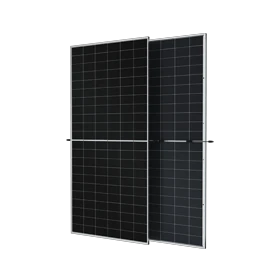400 kw solar panel price
Understanding the Costs and Benefits of 400 kW Solar Panel Systems
In recent years, the demand for renewable energy sources has surged, driven by the need for sustainable solutions to combat climate change and reduce dependence on fossil fuels. Among the various options available, solar energy has emerged as a leading contender. One of the most significant applications of solar technology is the installation of solar panel systems, particularly those with a capacity around 400 kW. This article will explore the price, benefits, and considerations associated with such systems.
What Does a 400 kW Solar Panel System Entail?
A solar panel system's capacity is measured in kilowatts (kW), indicating how much energy it can generate at a given moment. A 400 kW system is typically suitable for medium to large businesses, schools, or other institutions that consume substantial amounts of electricity. The installation of a system of this size requires a considerable array of solar panels, inverters, and other necessary equipment, as well as an adequate space for installation.
Cost Breakdown of a 400 kW Solar Panel System
The cost of a 400 kW solar panel system can vary significantly based on several factors, including geographical location, the type of solar panels chosen, installation costs, and available incentives or rebates. On average, the installation cost for commercial solar systems ranges from $2.50 to $3.50 per watt. Therefore, a 400 kW system could typically cost between $1,000,000 and $1,400,000.
1. Equipment Costs This typically comprises the solar panels, inverters, racking systems, and balance-of-system components. High-efficiency solar panels may have a higher upfront cost but can provide greater energy production over time.
2. Installation Costs Labor and installation costs can vary considerably depending on the locality and the complexity of the installation. It’s essential to work with reputable installers who can ensure proper installation and adherence to local regulations.
3. Incentives and Rebates Many governments offer tax incentives, rebates, or grants for solar energy installations. In the United States, for example, the federal solar tax credit allows property owners to deduct a percentage of the cost of installing a solar energy system from their federal taxes.
4. Financing Options Businesses can choose from various financing options such as cash purchases, solar loans, power purchase agreements (PPAs), and leases, which can significantly impact the initial costs and return on investment.
Benefits of Installing a 400 kW Solar Panel System
Investing in a 400 kW solar panel system offers numerous benefits beyond cost savings. Some key advantages include
1. Environmental Impact Solar energy is a clean and renewable resource. By generating power from sunlight, facilities can significantly reduce their carbon footprint and contribute to sustainability efforts.
400 kw solar panel price

2. Energy Independence By generating their own electricity, businesses can reduce their reliance on the grid, protecting themselves from rising energy costs and potential supply disruptions.
3. Long-term Savings While the initial investment is substantial, the long-term savings on energy bills can be significant. Businesses can expect to save on electricity costs over the system’s lifespan, typically 25 years or more.
4. Increased Property Value Solar systems can enhance the value of retail and commercial properties. Potential buyers often view solar installations favorably due to their potential for reduced operational costs.
5. Job Creation The solar industry supports a substantial number of jobs, from manufacturing to installation, contributing to local economies.
Considerations Before Installation
However, before proceeding with the installation of a 400 kW solar panel system, it’s crucial to consider several factors
1. Site Assessment An evaluation of the site for solar access, potential shading, and structural integrity is necessary to maximize energy generation.
2. Regulatory Compliance Understanding local regulations, building codes, and zoning laws is essential for a smooth installation process.
3. Maintenance While solar panel systems are generally low-maintenance, routine inspections and occasional cleaning are necessary to ensure optimal performance.
4. System Monitoring Implementing monitoring software can help track the system's performance, allowing for timely maintenance and adjustments if needed.
Conclusion
Investing in a 400 kW solar panel system presents a worthwhile opportunity for businesses looking to enhance their sustainability efforts and reduce energy costs. While the upfront costs may be significant, the long-term economic and environmental benefits can justify the investment. With various financing options and incentives available, now is an excellent time for organizations to consider making the shift to solar energy. As technology advances and the renewable energy market continues to grow, the transition to solar power is not just a smart choice; it’s an imperative for a sustainable future.
-
String Solar Inverter: The High-Efficiency Solution for Smart Solar EnergyNewsJul.14,2025
-
Revolutionizing Rooftop Energy with the Power of the Micro Solar InverterNewsJul.14,2025
-
Power Independence with Smart Off Grid Solar Inverter SolutionsNewsJul.14,2025
-
On Grid Solar Inverter: Powering the Future with Smart Grid IntegrationNewsJul.14,2025
-
Monocrystalline Solar Panels: High-Efficiency Power for the Future of Clean EnergyNewsJul.14,2025
-
Bifacial Solar Panel: A Smarter Investment for Next-Generation Energy SystemsNewsJul.14,2025







